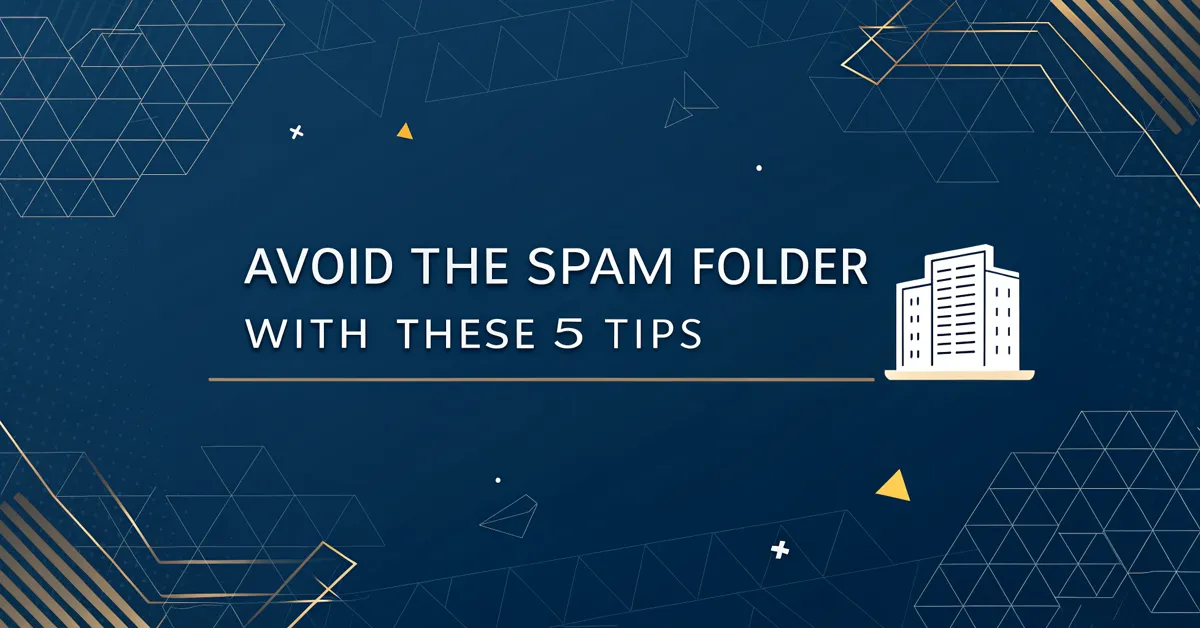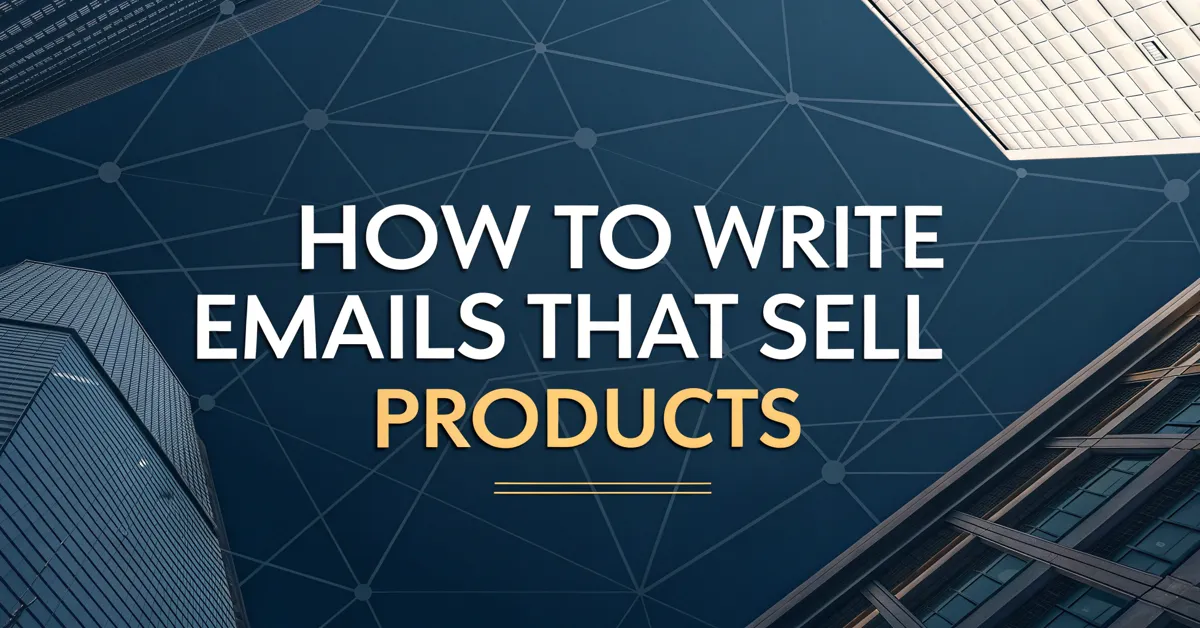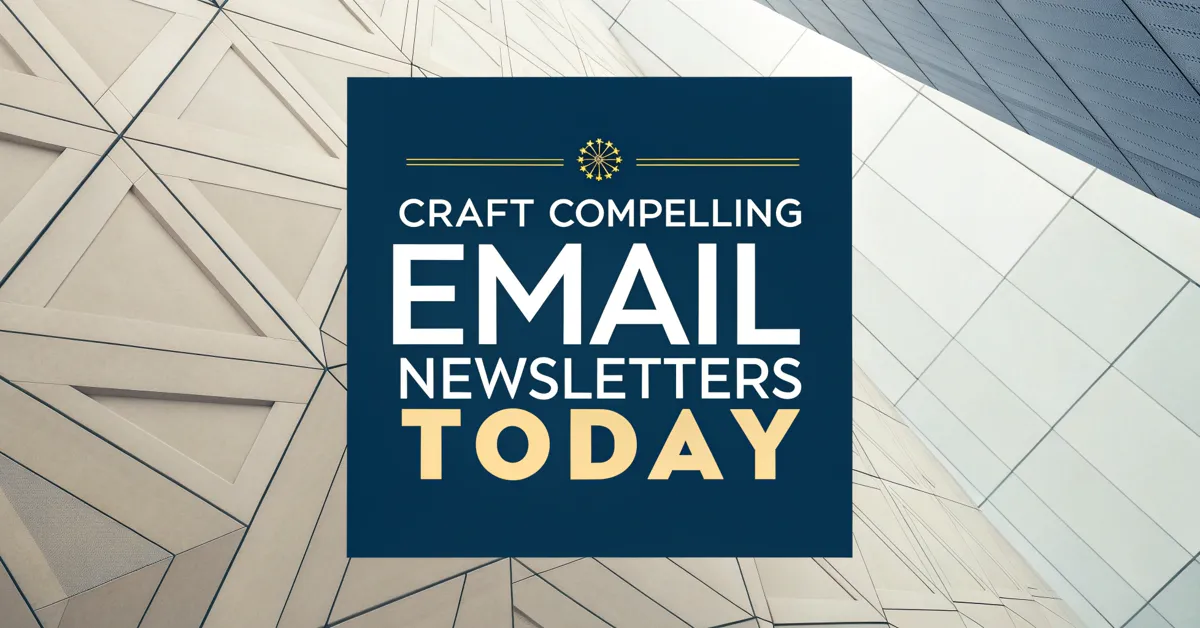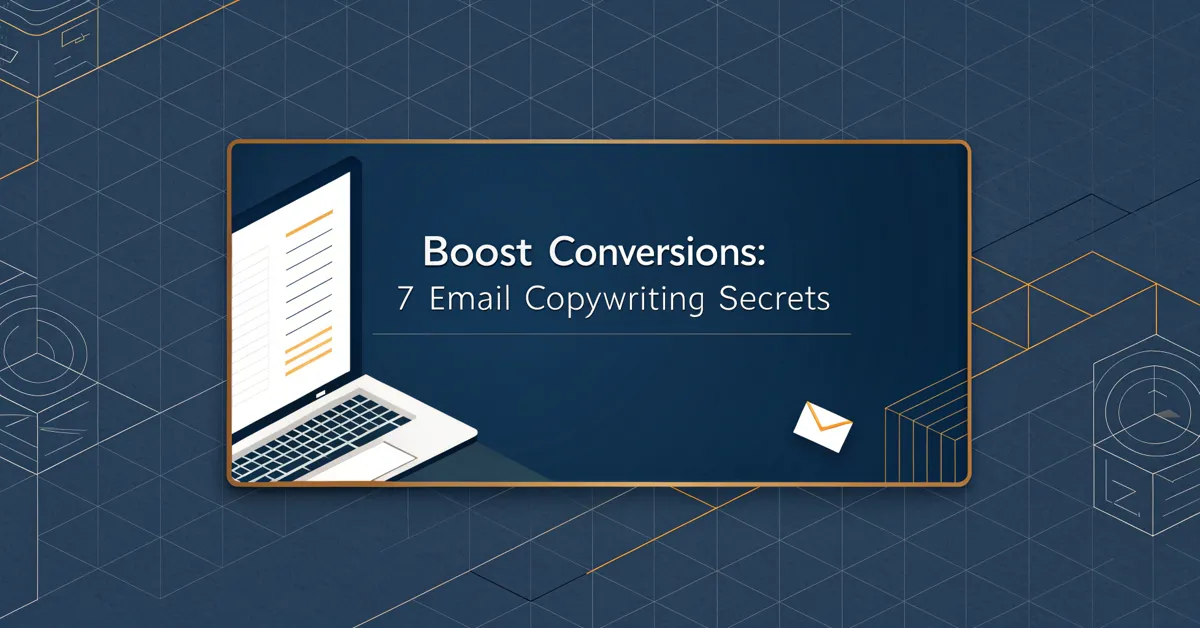Tired of your emails landing in the spam abyss? It’s a frustrating experience. You spend time crafting the perfect message, only for it to vanish into the digital ether. The good news? You have the power to change that. By understanding what triggers spam filters, you can take control and ensure your emails reach their intended destination: the inbox. This article isn’t about complex tech jargon. We’ll cut through the noise with five practical tips to help you avoid the spam folder.
5 Ways To Avoid the Spam Folder
The battle against spam filters is real. These filters are like the bouncers of the internet, deciding who gets in and who gets turned away. But with the right approach, you can make sure your emails are always on the guest list. Here are five powerful strategies you can use today.
1. Get Permission, It’s Key
First things first, never email people who have not given you their consent. Sending unsolicited messages is a quick ticket to the spam folder. It can also harm your sender reputation. Think of it like this: you wouldn’t walk into someone’s house without being invited. The same rule applies to email.
Building an email list the right way is the best strategy. It shows you respect the people who receive your emails. It also makes them more likely to engage with what you send.
Instead of buying lists, focus on organic growth. Here are a few ways you can do that:
- Opt-in forms: Place them in your website. Offer a newsletter or an incentive to entice people to sign up.
- Pop-ups: Use them with care. Make sure you’re not being too intrusive. Show it to people who are about to leave your site.
- Social media: Invite people to sign up on your social media pages.
- Contests: Run contests or giveaways that require people to give their email.
When someone signs up, send a confirmation email. This double opt-in process ensures you have genuine interest and reduces the chance of spam flags. Always make it easy for people to unsubscribe. When they no longer want to hear from you, they should be able to leave with ease. It is the golden rule of email marketing. Respecting their decision is as key as getting their permission in the first place.
2. Keep it Clean, It’s Not Optional
Your email’s content has a huge effect on if it lands in the inbox, or in the spam folder. Spam filters are designed to catch poor quality content. You need to keep things clean to get past these gatekeepers.
Avoid using all caps. It can come off as loud or aggressive. It can make your messages look like something that was mass-produced. Watch out for too many exclamation points. These can also make your emails look too eager. Too many of them can raise red flags. They can also make the tone of your email look strange.
Here are a few words and phrases you should steer clear of:
- Free: Unless it’s tied to a very good offer, avoid it.
- Guaranteed: No one can promise results. Do not make it sound like you can.
- Urgent: Scammers use this trick a lot.
- Opportunity: It sounds too good to be true and makes emails look fishy.
Also, avoid embedding forms in emails. This is not a safe practice. Use links that redirect to your website instead. Use high-quality images that fit your brand and make sense with the text. Do not use images that do not make sense with the rest of your content. This looks off and makes your email look unprofessional.
Always run your content by a spam checker before sending. There are tools that can do this. They will point out problems that may trigger spam filters. This step will save you from lots of issues.
3. Build Trust, It’s Crucial
Your sender reputation is a big factor in whether your emails go to the inbox. A bad sender reputation is as if you have a bad rep in your neighborhood. No one will trust you, and no one will want to receive anything from you.
Your reputation is built on how you behave as a sender. Internet Service Providers (ISPs) look at a few things to decide how to treat your messages. Here are two aspects they care the most about:
- Engagement: When people engage with your emails, it shows ISPs you’re a good sender. So, always strive to send quality emails that people will enjoy. This can mean opening your emails, clicking your links, and responding to what you send. It means they find value in what you have to say.
- Complaints: If too many people flag your emails as spam, it will hurt your reputation. They will be less likely to put your next emails in the inbox. This is why it’s vital to only send emails to people who have chosen to receive them. Always respect their decision if they want to unsubscribe.
A high bounce rate can also affect your reputation. A bounce is when you send a message to a recipient, but it does not go through. These happen when you send to fake addresses. Always keep your email lists clean. Remove addresses that bounce, or people that have unsubscribed. It will help you avoid lots of problems.
Keep your emails consistent. Send them from the same email address. Don’t be switching from one to the other. If you do, ISPs will view this as a red flag. Keep your messages clean. Be respectful of your audience. The trust you build will show in your emails’ performance.
4. Nail The Tech Side, It’s Key
The tech behind your emails can make a huge difference. Think of it as the pipes that carry your message. If they aren’t clean, the message will not arrive as it should.
Here are the three things you need to check:
- SPF (Sender Policy Framework): This is a record that tells email servers which addresses are allowed to send messages from your domain. This makes it harder for spammers to pretend to be you. Always make sure it is set up correctly.
- DKIM (DomainKeys Identified Mail): This adds a digital signature to your emails. It verifies that the message has not been changed during its journey. If something changes, it won’t look valid. This is key for showing your messages are legitimate.
- DMARC (Domain-based Message Authentication, Reporting, and Conformance): This tells email servers what to do when an email fails SPF or DKIM checks. It can be used to give instructions. You can tell email servers to reject these messages or to send a report to you. It’s best to have this set up so you can protect your brand.
These three standards help verify the authenticity of your emails. If they are set up correctly, ISPs will trust your messages more.
It’s best to use a trusted email service provider. They often have the tech in place so you can manage these settings well. If you have any issues, they can help you set it up. Make sure that every message you send passes these tests. This will ensure they have a smooth trip to their final destination.
5. Test and Track, It’s Essential
Testing is a key part of sending emails that hit the inbox. Never send out emails without testing them. You need to make sure that they perform as they should. Test emails with different providers. Check to see if they land in the inbox. Send a test email to your own account, but do not just stop there. Check what happens with different providers like Gmail, Yahoo, Outlook, and others.
There are tools that can help you do this. They can show how your emails look in various inboxes. These tools can show you if any design elements are off. Or if there is anything that is not working as it should.
Always track the performance of your emails. Keep a close eye on:
- Open rates: How many people are opening your emails? A low rate means your subject lines need work. Or that your content is not valuable for your audience.
- Click-through rates: How many people are clicking your links? A low rate means people are not interested in your offer or your content.
- Bounce rates: How many of your emails are not being delivered? A high rate means your list is not clean.
- Unsubscribe rates: How many people are choosing to stop receiving your emails? A high number may mean that your emails do not match your audience’s needs. Or you are being too aggressive.
- Spam complaints: How many people are marking your emails as spam? A high number means there’s a problem with how you’re building or sending your emails.
With this data, you can make better decisions on your emails. You can spot the trends in your data. And you can adapt your plan based on the results. A cycle of testing and tracking will help you become a better sender. You will get your messages to the inbox more often.
Understanding Why Emails Go to Spam
Before you improve, you need to know why spam filters do what they do. Spam filters are the gatekeepers of your inbox. They work to keep out unwanted and unsafe emails. But they are not perfect. Sometimes, good emails are marked as spam, and that can be a problem.
Filters use complex algorithms to decide whether a message is spam. They look at the content of the email. They look at your reputation as a sender. They also look at the tech that is behind your email. You need to know all of this in order to get your emails to the inbox.
Here are some of the main reasons why your emails may end up in the spam folder:
- Lack of permission: If you email people without their consent, it’s a big problem. You need permission from people to send them emails.
- Poor sender reputation: If your sender reputation is bad, email servers will see you as someone that is not trustworthy.
- Suspicious content: Spam filters are built to spot emails that are of poor quality. If you use trigger words, or any spam tricks they can flag you.
- Bad email structure: If your email is not formatted well, it can look suspicious. Avoid large blocks of text. Do not use too many images. Keep it balanced.
- Tech issues: Problems with SPF, DKIM, or DMARC records can flag your emails.
- Low engagement: When people do not interact with your emails, it can show you are not a trustworthy sender.
- High bounce rates: If you have a high bounce rate, it is a signal that your lists are bad.
- Spam complaints: When people mark you as spam, it hurts your sender’s reputation.
Now that you know what the problem is, you are better equipped to solve it. You know the issues, so you can take the necessary steps to fix them.
How to Keep Your Email List Clean
A clean email list is a happy email list. It will improve your sender reputation. It will also ensure that your emails reach the right people. It will save you from headaches and deliver more results.
Here is what you should do:
- Double opt-in: Always get clear consent. Ask people to confirm their email. This makes sure that they have a real interest in hearing from you.
- Regularly remove bounces: Do not keep bad email addresses on your lists. Remove any that bounce. It is key to keep a good sender reputation.
- Make unsubscribing easy: Always respect people’s choices. If someone wants to leave, make sure they can do it with ease. This is key for showing you are a good sender.
- Segment your list: Split your list into smaller groups based on their actions. This means you can send them targeted emails that have more relevance.
- Use preference centers: Give people control over the types of emails they receive.
- Never buy email lists: Sending emails to people without their permission is a quick way to land in the spam folder.
Your email list is like a garden. You need to keep it clean to see growth. Take these steps, and it will be much easier to reach your audience.
Why Subject Lines Matter for Deliverability
The subject line is often the first thing people see when they receive your emails. It can decide whether they open it or ignore it. It also has an effect on your deliverability.
A good subject line can boost engagement. A bad one can send your email straight to the spam folder. This is why it is so important to get it right.
Here are a few tips for writing subject lines that work:
- Make it clear: Tell people exactly what to expect in the email. Don’t try to be too clever.
- Create urgency: Use words that create a sense of importance. But, don’t overdo it.
- Use keywords: Think about the words people are most likely to use to look for what you sell.
- Keep it short: Keep subject lines short to fit on different devices.
- Use numbers: Numbers are attention grabbers and can often increase open rates.
- Personalize: Use their names, or actions to make subject lines feel more personal.
Be honest with your subject lines. Never try to trick your readers. This is a quick way to lose trust. This will cause your emails to be marked as spam. Always match what you promise in the subject with the content in the email. This will build trust with your audience.
Understanding Email Authentication
Authentication is what gives your emails credibility. It shows email providers that your emails are legitimate. It’s like having a passport for your emails. If you do not have the right documents you can’t get in.
We have already covered SPF, DKIM, and DMARC. Let’s see how they work in more detail:
- SPF: This checks if the email has been sent from an approved server. The SPF record lists all the addresses that can send messages on behalf of your domain.
- DKIM: This uses a digital signature. It verifies that the email has not been changed on its journey. If you do not pass this, your message may be flagged as a threat.
- DMARC: This adds a layer of protection. It provides a policy. It tells email servers how to deal with emails that fail SPF or DKIM tests.
With these three things working together, you can make sure your emails get to the inbox. They show email servers you are a sender that can be trusted. It is a key part of having good email practices.
The Impact of Email Design on Spam Filters
The design of your emails can have a huge effect on how filters treat them. Emails that look bad, or are not well formatted can be flagged. They can look like something that should be marked as spam.
Here are a few things to avoid:
- Too many images: Emails that are full of images can look like spam. Use a good mix of images and text to make them appealing.
- Large images: Large images can take a long time to load. They also can trigger spam filters. Always compress your images before sending them.
- Too much text: Long blocks of text are hard to read. They can make your email look dull and like something that no one wants to engage with.
- Inconsistent design: Make sure that all your emails look the same. The design should always represent your brand. It builds trust with your audience.
- Bad mobile design: Most people read their emails on mobile phones. Make sure that your emails look great on all devices.
Always aim to create a balance with text and images. Your emails should be easy to read. They should be appealing to look at. A good design will make sure your emails are well received. It will show that you care about your brand.
How Email Service Providers Affect Deliverability
Your email service provider (ESP) is the platform you use to send your emails. Your choice of ESP can affect deliverability.
A good provider has the tech and the features needed to make sure that your emails land in the inbox. They manage their servers well. They also keep up to date with the latest email standards.
Always choose an ESP that has a reputation for deliverability. Here are a few questions to ask when choosing an ESP:
- Authentication: Does the ESP make it easy to set up SPF, DKIM, and DMARC records?
- List management: Can the ESP keep your lists clean, and easily manage them?
- Deliverability: Does the ESP have good tools and resources to ensure you are following best practices?
- Support: Can they offer good support if you have questions?
- Tracking: Do they have good tracking for emails?
You do not want to work with an ESP that puts your sender reputation at risk. Choosing the right ESP can improve your results. It can help you reach your intended destination.
What To Do If You Are Marked as Spam
Sometimes, despite your best efforts, your emails can be marked as spam. It can be frustrating but you must take steps to fix it. It is important to take it seriously and take steps to make sure it does not happen again.
Here are a few steps you can take if you have this problem:
- Check your sender reputation: Use tools that check your sender score. This will help you know how ISPs see your domain.
- Review your content: Look at your email content to see if you are using trigger words or poor formatting.
- Check your tech setup: Always make sure that your SPF, DKIM, and DMARC records are set up correctly.
- Talk to your ESP: Your provider can help you find out if there are any issues with your account.
- Clean your list: Remove all addresses that have not engaged with your emails. This will improve your overall engagement.
- Change your practices: If you see a trend, change your email practices to reduce the risk of being marked as spam.
You may see this as a setback, but it is a chance to learn. Use this as a learning experience. Use these steps to get better at your craft.
The Future of Email Deliverability
The fight against spam is ongoing. It is a constantly evolving battle. You must stay up to date to keep your emails in the inbox.
Here are a few things to watch out for in the future:
- AI and machine learning: Spam filters are using AI to improve their ability to detect spam. It can adapt to new threats.
- Privacy changes: New laws and regulations are changing how people view privacy. This can affect how you collect and use email data.
- User experience: As people expect more from their emails, you will need to improve the experience to keep them engaged.
Email marketing will change in the future. The key is to adapt, keep learning, and focus on the needs of your audience. This will help you to build a great reputation.
Are You Ready To Send Emails That Arrive?
Getting your messages to the inbox is key to successful email marketing. Spam filters can feel like a challenge, but they are not unbeatable. By taking steps to build trust, focus on good content, and respect your readers, you can ensure your emails land where they should. Keep learning, and keep testing. And you will create better emails that your audience will want to open. It takes time and effort, but it is worth it.





